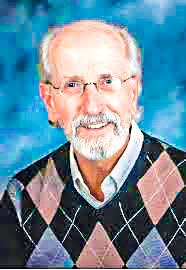Early in my just-ended three-week visit to Cuba, my wife and I were strolling along Havana's stunning Malecon walkway which stretches for miles along the city's northern coast. It was mid-afternoon on a Friday. We couldn't help noticing how the seafront was more gorgeous than ever.
Both Peggy and I had been to Cuba many times, but it had been seven years since our last visit. In the meantime, buildings along the Malecon had taken on new coats of paint. Greens and whites, reds, golds, oranges, and blues sparkled in the sunlight alongside as yet unpainted decrepit apartment buildings. As ever, clotheslines of bed sheets, shirts, blouses, children's clothes and underwear flapped from balconies in the sea breeze.
Yes, we couldn't help noticing, things had changed drastically since our last visit. And it wasn't only the paint and scaffolding outside the buildings under reconstruction.
Tourists were everywhere. Even those "Hop-on, Hop-off" double-deck tour busses which we had seen in Europe passed at regular intervals. Havana's atmosphere wordlessly conveyed an optimism we had not witnessed since we began visiting Cuba in 1997.
Sharing observations like that, we suddenly heard someone call out to us.
"Hey, where are you from?" The young man addressing us was Cuban, tall, black and smartly dressed in jeans, Nike T-shirt and sneakers. His wife was lighter skinned and similarly dressed. Both were friendly and smiling. Seeing the couple reminded us that Cuba has a largely Afro-descendent population.
"We're from the United States," I replied.
"Oh, the U.S.!" The young man smiled broadly. "We love the United States; the U.S. is the greatest country in the world!" His wife shook her head In agreement.
"No," I contradicted, "Cuba is the greatest country in the world."
"That's where you're wrong, my friend," the young man said still smiling. "Cuba is the greatest country in Latin America . The United States is the greatest country in the world!"
The encounter spoke volumes about the new Cuba that impressed us so as we walked the Malecon. The exchange offered a snapshot of an economy that is rebounding from a deep depression, of a people who are friendly, proud and patriotic, and of Cuban aspirations to U.S. levels of consumption. That aspiration contains both promise and threat.
But before I get to that, let me tell you more about our visit. . . .
This time we were in Cuba as part of a Berea College summer school course. We called the course "Cuba: Resilience and Renovation." Ours was a fact-finding study. What has Cuba been? What will it become? Those were our questions. Thirteen students engaged the conversation along with my daughter and her husband, and several friends. It was great fun.
Our course took us from Havana eastward to Varadero, Santa Clara, Matazanas, Camaguey, and Santiago de Cuba. We filled our days with conferences involving academics and government officials including a representative of the U.S. Interests Section(the U.S. quasi-embassy in Havana).
We found ourselves chatting with people on the street; some of us went into their homes. We met students, social activists, feminists, representatives of the LGBT community, farmers, co-op representatives, merchants, Santeria practitioners, Baptist ministers, medical personnel, hospital patients, children and the elderly in a day-care centers, and members of a Committee in Defense of the Revolution.
(Note: You can view every article as one long page if you sign up as an Advocate Member, or higher).





